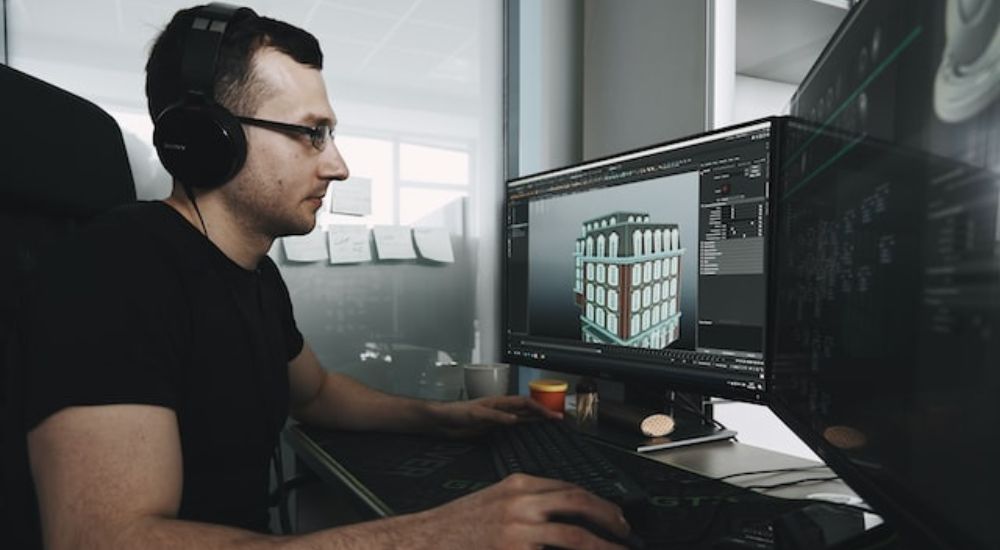The gaming industry is truly, truly huge. You might not believe us, but gaming has been a billion-dollar business for decades now, raking in over $200 billion in sales every year – and this figure grows with every passing year. In the United States alone, Statista values the video game market at over $90 billion!
Like in all industries, there are small and big fishes, with the former pumping hundreds of games every year while the latter releases only a few titles, but managing to generate hundreds of millions in income.
These companies are known to spend dozens (if not hundreds) of millions of dollars in the development and marketing of their games, making them highly anticipated. Those games receive a very special denomination: AAA games.
And those bigger companies are stealing the spotlight of today’s post, in which we will cover the definition of an AAA game, whether it’s possible to create one as indie developers and answer the decades-old question: how to make an AAA game?
What is an AAA game?
Even though there is no clear definition of what makes an AAA game, this term is mostly used for games that take multiple years to develop. Yes, it can take years to develop a single game, but when we’re talking about AAA game development we’re also talking about industry-leading companies with enormous budgets, development teams and gameplay depth, often being the ones responsible for pushing the limits of what’s possible increasingly higher.
Their budgets are so mind-boggling that a good part of it goes into marketing. Cyberpunk 2077, one of the most expensive games ever made, reportedly cost around $320 million US dollars to develop, two thirds of which went exclusively into marketing.
Considering their investments and the fact they’re made by huge, consolidated game development studios, AAA games are also highly anticipated. Despite its numerous flaws and bugs, Cyberpunk 2077 is one of the best examples of an anticipated AAA game, recouping the investment in mere days after its release.

Is it possible to make an AAA game as an indie developer?
Most people on the internet say it’s impossible, and we mostly agree with them. It’s extremely hard, as independent developers, to have budgets that immense to work on the game and market your project like most AAA games.
Furthermore, the development of a single AAA game usually takes tens of thousands of man hours and expertise on a wide variety of areas that are not related to each other – programming, creation of 3D game assets, game design, voice acting, music composition and so on.
However, even though it’s a climb steeper than the Everest, it’s possible to create games that play and feel like an AAA game. Games with such quality standards are sometimes referred by games as “III” (Triple-I) games. One of the best examples of an III game is The Witness, a universally acclaimed puzzle game that requires you to solve puzzles to draw lines. It seems simple, but it has a paradigm shift down the line that makes the game such a memorable experience.
Still, if you are willing to take on the challenge to create an AAA title, we have a step-by-step process ready for you.
How to make an AAA game: development steps
1. Pre-production phase: concept creation
Every game starts with an idea/concept, a gem that must be polished further to be valuable. Start drafting your Game Design Document (GDD) here and document every detail you and your team think of in there. It’s important to establish a central idea, a general theme even before the game design step.
Explore some mechanics, some different twists on popular games that could fit and enhance your game. Imagine its setting, its art style and so on, but make them flexible enough unless some ideas are good enough to be set in stone.
2. Game design
In the game development process, this step is one of the most critical as game designers make all the strategic decisions related to the gameplay – the universe’s setting, main storyline, characters, NPCs, levels, rules, game mechanics and so on.
Make sure to discuss with other game designers and jot everything down on the GDD, which is going to be the guide moving forward. It is in this step that storyboards, layouts and concept arts are created and later stored in the GDD for future reference. Furthermore, don’t forget to include an executive summary of your game in there as it’s important to attract new investors to fund your AAA/III game.
In AAA game development studios, it’s very common for game designers to split up in different teams covering every part of the design stage, which includes, but is not limited to: level design, character design, UI/UX design, world building, story writing, content design and system design to name a few.
3. Production phase: asset creation
Welcome to the gauntlet! One of the most time consuming processes of game development is the creation of 3D assets.
Some art styles will require less work (such as low poly), but most AAA games follow the realism art style, which is further divided into photorealism (making the game look as lifelike as possible) and fantastic realism (unreal elements that could exist within our world). Other games, like Overwatch 2, went for a highly stylized (cartoony) art style for its graphics.
In this step, the art team is headed by the art director. Together, they create thousands of game-ready assets, which include character models, environments, props, visual effects, sound effects, background music, rigging and animations.
As AAA games are highly regarded as visually stunning experiences, it’s important to invest in high quality artwork that integrates well into the game. If needed, you might consider hiring more professionals or outsourcing some assets to shorten your AAA game’s development time.

4. Programming the game itself
Shortly after asset production has started, game developers will start creating the game often in the engine of their choice. Most AAA gaming companies have their own proprietary engines, but it’s possible to create fantastic experiences with the public ones, such as Unity and Unreal Engine.
In this step, game developers must work closely with producers, designers and artists to translate the vision contained in the GDD to a fully functional gaming experience.
Developers are the professionals who implement all features, mechanics, events, interactions and scripts that will happen while playing a game, all of which highlight the importance of being knowledgeable and well-versed with the engine, game development tools and their respective programming languages.
5. Quality Assurance (QA) testing
Usually the last step before full game release, QA testing is crucial to ensure the minimal amount of bugs, crashed and game-ruining exploits that could frustrate players.
QA testing for AAA games is usually done in two major steps: alpha testing (which is a playable, but incomplete version of the game) and beta testing (a complete and final version of the game). Alpha testing is where testers find the most bugs and beta testing is where designers finish balancing and polishing the game to improve the user experience as much as possible before release.
6. Release and bug fixing
Your game is finally ready to hit the stores! It’s common for AAA companies to have stores of their own, but indie developers can make use of the many available game stores, such as Steam and Itch.io.
However, when it comes to highly anticipated games, nailing the release is a must, or you risk tarnishing your game’s and even your company’s reputation for years to come, making players less likely to buy your upcoming AAA projects. Instead, don’t be afraid to inject money and resources to ensure the release is going to be a memorable and enjoyable experience for your players.
As your game is played by thousands worldwide, some bugs that scraped by QA testers will be reported by your players, allowing developers to fix and deploy them at a later date.
We can create your game for you!
Now that you have a better grasp on how to make an AAA game, you might feel discouraged considering those projects usually require unimaginable amounts of money and, unsurprisingly so, thousands of work hours that could arguably be better spent elsewhere.
But what if you could instead hire a professional game studio to design and develop your game idea for you?
We are Main Leaf, a game development studio that’s been in the game industry for over a decade. We have more than 70 professionals ready to take on the design and development of your upcoming game.
Did you become interested in working alongside seasoned professionals? Then look no further and request a game quote today! We promise to get in touch with you within 24 hours.

